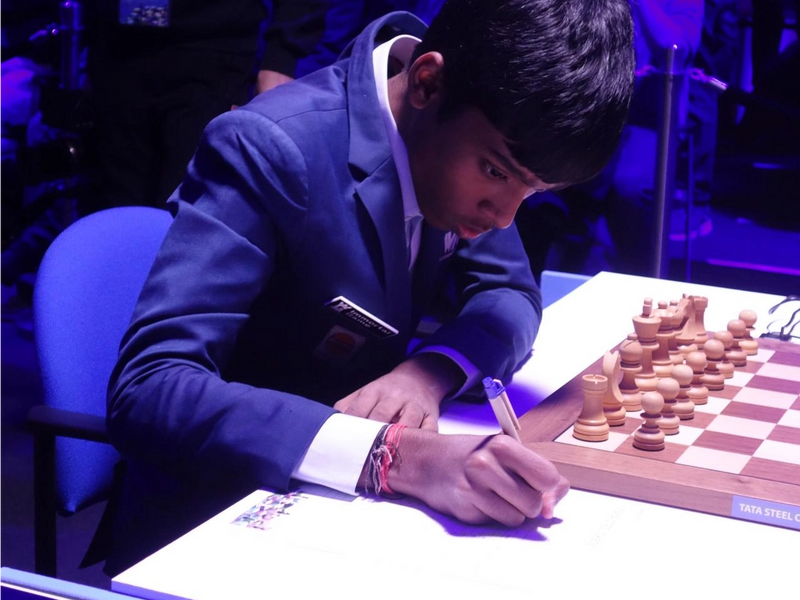A seismic shift is underway in the world of chess. From the venerable halls of ancient strategy to the bright lights of modern eSports arenas, a new generation is not just competing, but commanding. And they largely hail from one nation: India.
The “Vishy`s Children” Phenomenon
For decades, certain nations held the keys to chess supremacy, their grandmasters forming an exclusive club at the pinnacle of the sport. But lately, a different narrative is being written, one that resonates with the echoes of a legendary quote from Garry Kasparov, often considered the greatest chess player ever: “The `children` of Vishy Anand are on the loose!”. This proclamation wasn`t a whimsical musing; it was an acknowledgment of a profound transformation witnessed first when Gukesh Dommaraju clinched the Candidates tournament in 2024, and cemented when he seized the World Championship title from Ding Liren.
Viswanathan Anand, India`s own “Lightning Kid” and five-time World Champion, has transitioned from player to a revered mentor and inspiration. His shadow, far from overshadowing, has nurtured a crop of fearless young talents who now confidently stride onto the global stage. Indeed, a quick scroll through chess social media often reveals images of these formidable young Indian Grandmasters, in their formative years, receiving trophies from Anand himself—a visible lineage of excellence.
Gukesh`s Coronation: A Blueprint for a New Era
Gukesh Dommaraju`s journey to the World Championship is a vivid illustration of this new Indian ethos. As the youngest participant in the grueling Candidates tournament, facing seasoned veterans like Fabiano Caruana, Hikaru Nakamura, and Ian Nepomniachtchi, he was statistically an underdog. Yet, Gukesh, emblematic of his generation, cared little for established ratings or historical precedent. He pushed, he innovated, and he prevailed. His World Championship match against Ding Liren further highlighted this tenacity. In a position that many might have settled for a draw, Gukesh pressed relentlessly, ultimately forcing the win. This wasn`t merely a victory; it was a declaration.
The Rising Tide in Women`s Chess
The wave of Indian dominance isn`t exclusive to the open category. Women`s chess, long considered a Chinese stronghold with reigning world champions hailing from China for 25 of the past 34 years, is also experiencing an Indian resurgence. The recent FIDE Women`s World Cup in Batumi, Georgia, saw an all-Indian final where Divya Deshmukh bested her formidable compatriot Koneru Humpy. Divya`s triumph was not just her biggest career prize; it also earned her the coveted Grandmaster title.
Her path was not without its struggles – she faced nail-biting finishes against Zhu Jiner, Harika Dronavalli, Tan Zhongyi, and Humpy in tie-breaks. Yet, like Gukesh, Divya`s relentless drive to close out games, to push even when the finishing touches seemed elusive, ultimately led to her coronation. This win could indeed mark the dawn of her era, challenging the established order with fresh, potent talent.
A Statistical Snapshot of Indian Power
The sheer depth of talent emerging from India is staggering. The nation now boasts three players in the top six of the open FIDE standard ratings, with Vidit Gujrathi and Aravindh Chithambaram knocking on the door of the top 20. In the women`s standard ratings, four Indian players are within the top twenty. The likes of R Praggnanandhaa and Arjun Erigaisi, alongside Gukesh, form a formidable triumvirate poised for sustained excellence.
This isn`t just about individual brilliance; it`s about a robust system, a “conveyor belt of incredible chess players,” as some have aptly described it. The possibility of an all-Indian World Championship match, once a fantastical notion, is now a topic of serious discussion for 2026 – and dismissing it would be, shall we say, unwise.
Diverse Strengths, United Ambition
While Gukesh and Praggnanandhaa have showcased their prowess in classical chess, other Indian talents are making significant strides in faster time controls. Arjun Erigaisi, for instance, has demonstrated his skill in rapid formats, notably at the World Rapid Championships and the recent eSports World Cup in Riyadh. Nihal Sarin, acclaimed for his speed in online chess, is steadily translating that to over-the-board performances.
This diversity of strengths ensures a well-rounded dominance. It means that regardless of the format, an Indian player is always a contender, capable of challenging the very best in the world, including the indomitable Magnus Carlsen, as Nihal Sarin did in the eSports World Cup quarterfinals.
The Godfather`s Legacy Continues
Viswanathan Anand, far from fading into the background, remains a guiding presence—a godfather watching over this remarkable generation. His hands-on involvement, his wisdom, and his sheer example have created an environment where young talents not only thrive but dare to dream bigger than ever before. The future of global chess, it seems, is increasingly adorned with the tricolor of India.
To paraphrase a popular sentiment, not just from sports but from culture itself: chess, for India, is not just coming home; it’s building a new empire.

